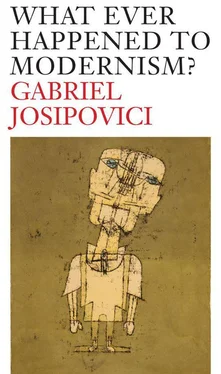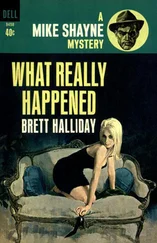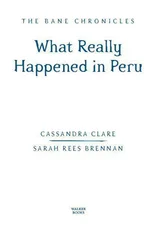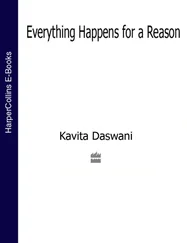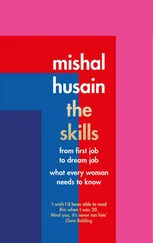I was smitten
Abruptly, with a view (a sight not rare)
Of a blind Beggar, who, with upright face,
Stood, propped against a wall, upon his chest
Wearing a written paper, to explain
His story, whence he came, and who he was.
Caught by the spectacle my mind turned round
As with the might of waters; an apt type
This label seemed of the utmost we can know,
Both of ourselves and of the universe;
And on the shape of that unmoving man,
His steadfast face and sightless eyes, I gazed,
As if admonished from another world. (VII. 637–49)
We are in Beckett country here. But also in Hofmannsthal country. Remember Lord Chandos's:
For it is something that has never been named and that is probably impossible to name, which manifests itself to me at such moments, taking some object from my everyday surroundings, and filling it like a vessel with an overflowing torrent of higher life … A watering-can, a harrow left abandoned in a field, a dog in the sun, a poor churchyard, a small farmhouse — any one of these can become a vessel for my revelation.
These objects move him, we now see, precisely because they have somehow returned to the earth, because they do not belong to the unnatural human urge to use the world merely as a natural resource, are as far as it is possible to be from ‘civilisation’.
What causes the poet's mind to turn ‘as with the might of waters’ is not just the stillness of the man and his sightless eyes, but the combination of those eyes with the paper pinned to his chest. Why should this combination affect him in this way though? Wordsworth does not explain, or rather fobs us off with the trite observation that this is a kind of emblem of our condition, showing us ‘the utmost we can know,/ Both of ourselves and of the universe’. But is that quite right? It seems rather as though the image forces us to recognise our folly in thinking that we can understand who we are and control our own destinies. Our eyes are sightless and our stories are pinned to our chests, readable to the world but never to ourselves. There is a grandeur to the man which is close to that of Oedipus when, in Sophocles' last play, he goes to his death at Colonus. He moves the poet as does the sudden appearance of the moon as the clouds part or the vision of a mountain reflected in a lake, because, like them, he leads the poet out of himself and his thoughts and anxieties to a renewed and totally unsentimental understanding of his place in the universe.
The last book of The Prelude begins with a different kind of vision. The poet has decided to climb Mount Snowdon at sunrise with a group of friends. A thick fog hangs over the mountain as they begin the ascent. He is in the lead,
When at my feet the ground appeared to brighten,
And with a step or two seemed brighter still;
Nor was time given to ask or learn the cause,
For instantly a light upon the turf
Fell like a flash, and lo! As I looked up,
The Moon hung naked in a firmament
Of azure without cloud, and at my feet
Rested a silent sea of hoary mist.
The tops of the mountains rise up like so many hills out of this sea of mist, but the sky is wonderfully clear; the Moon has banished the stars and seems to gaze
Upon the billowy ocean, as it lay
All meek and silent, save that through a rift –
Not distant from the shore whereon we stood,
A fixed, abysmal, gloomy breathing-place –
Mounted the roar of waters, torrents, streams
Innumerable, roaring with one voice!
Heard over earth and sea, and, in that hour,
For so it seemed, felt by the starry heavens. (XIV. 35–62)
The Prelude does not quite end here. As always, the poet wishes to place the vision within the continuum of human life. And this is important. Joseph Koerner has some remarkable pages, in his book on Friedrich, about the painter's fondness for what he calls the Rückenfigur , the figure who is and is not the painter, who is and is not the viewer, who stands at the limit of the picture, with his back to us, so that what we see is not what he sees, but him seeing . It is very important to Friedrich, Koerner points out, that this figure should be there, for he reminds us that vision is always vision at a particular moment, from a particular place, and that though vision may be the goal it does not subsume life but is only one moment, one experience, within life. And it is also very important that this figure should be, as he is for Wordsworth on Snowdon, bathed in mist, for mist is what unites the elements of the picture, what brings individual and vision into one orbit. It is also, of course, a figure for paint itself, which conceals the canvas and reveals figures, yet is the medium in which the entire scene exists. ‘ Wanderer above the Sea of Fog ’ ( figure 3 ), writes Koerner, ‘stands suspended between two notional paintings: on the one hand, the total replication of a valley in all its detail that has been overpainted in white; on the other hand, a blank canvas in which have begun to appear, here and there, the fragments of a scene.’ What this is saying, I take it, is that such Romantic artists as Friedrich (and Wordsworth) are not so much visionaries as explorers of what it means to see and what it means to paint or write. They approach the final vision, the apocalyptic covering of the earth by water, the merging of self and landscape, with mingled excitement and apprehension, but something tells them to stop, to wake up before the earth is engulfed, to remain on firm land gazing into the mist beyond. ‘In the end,’ Kierkegaard had written in The Sickness Unto Death , ‘it seems as though anything were possible, but that is the very moment that the self is swallowed up in the abyss.’ Friedrich and Wordsworth point us to that moment but step back from the final annihilation. Perhaps it is their eighteenth-century roots. Perhaps it is their temperament. The result is to leave them — and us — with a sense of loss at what has not quite been surrendered to, but also exaltation at the memory of what was experienced. It leaves a place, too, for art, which is the activity by which the vision can be recaptured and the sense of loss anchored. In a difficult passage Koerner makes the case for Friedrich, relating his view of him to the later history of art. What he says holds also for Wordsworth, and gives us a template for assessing the complicated dance of art and vision, hand and eye, which is one central aspect of the history of Modernism: ‘In the framed nothingness of From the Dresden Heath , or into the passage into loss plotted by Fog ’, he writes,

figure 3Caspar David Friedrich, Wanderer Above the Sea of Fog, c. 1818.
Romantic landscape seems to prefigure the blinding and blinded project of twentieth-century abstraction, which is why Friedrich can figure as the origin of such histories as, for example, Robert Rosenblum's controversial Modern Painting and the Northern Romantic Tradition . If we submit Friedrich's art to the semiotics of Romanticism, however, we discern a far more complex state of affairs. Abstraction will always be only a passing moment in our experience of the image, just as Friedrich himself is often compelled to raise a cathedral above the last horizon of his spiritual ‘histories’, as modernity's return of the repressed. Yet neither does this return fully eradicate the moment of blankness.
5. It's A Quick Death, God Help Us All
If Wordsworth and Friedrich abandon genre they nevertheless produce works which immediately assert that they are art and not something else, Wordsworth because he writes in verse, Friedrich because he paints in oils and frames his pictures. The novel's denial of genre was more radical. For the novel is precisely the form that emerges when genres no longer seem viable. From the start it pretended or pretended to pretend to be something else: a translation from a lost Arabic manuscript, the true account of the wreck of a boat on a desert island, the memoirs of a whore, a rake or an orphan. At the same time novels asserted, like Descartes at the start of his
Читать дальше
